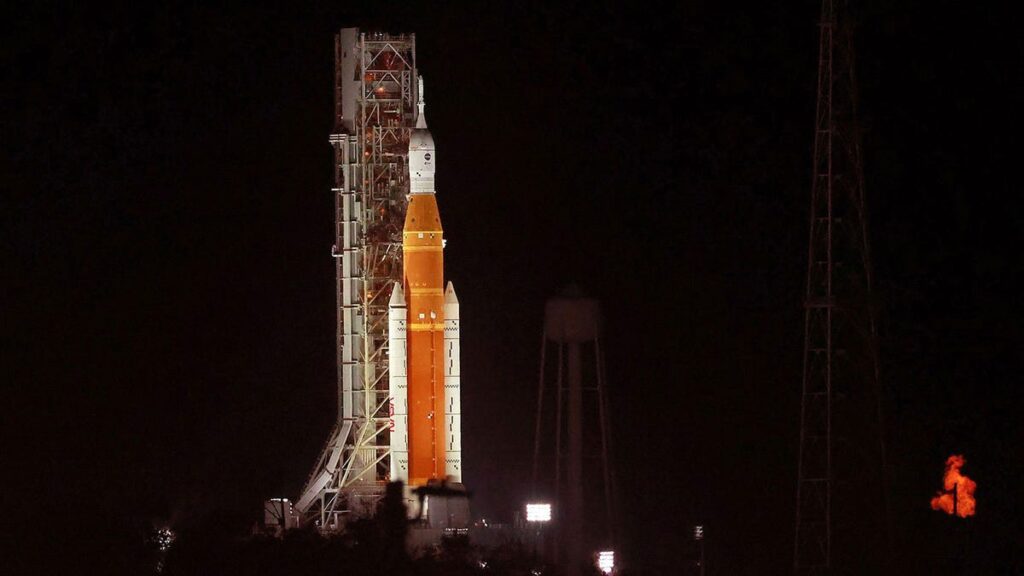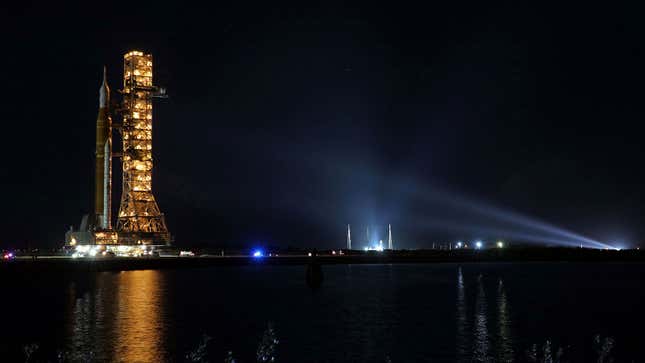NASA’s SLS Spending Spree Could Jeopardize Its Return To The Moon: Report

We all know what it’s like when you undertake a new project, it always ends up taking longer than you expect and undoubtedly costs more than you predict. It’s the same if you’re a federally-funded space agency, as NASA is discovering with its wildly over-budget and wildly-delayed Space Launch System.
Listen To The Lexus RC F Sing Through The California Mountains
NASA’s new Space Launch System (SLS) is a big deal. It’s the rocket that’s going to take us back to the Moon and, one day, onwards to Mars. But, it’s a project that’s been hit with delays and spiraling costs. Now, a report by NASA Inspector General Paul Martin has uncovered just how out of control the project is becoming.
According to Ars Technica, the SLS is now more than six years behind schedule and $6 billion over budget. It’s costing NASA so much to keep developing the system that Ars Technica reports that the out of control spending “could jeopardize plans to return to the Moon.”
In total, NASA is projected to spend $93 billion on the Artemis program between 2012 and 2025. Of that, $23.8 billion has been spent on the SLS, which has been developed from Space Shuttle tech that NASA is updating.
A few million up in smoke. Photo: Red Huber (Getty Images)
However, this means of creating the new rocket has brought all manner of headaches to the space agency. According to the report, NASA initially expected that using Space Shuttle components would “result in significant cost and schedule savings compared to developing new systems for the SLS.”
This simply hasn’t been the case, though. Instead, NASA found that the “complexity of developing, updating, and integrating new systems along with heritage components proved to be much greater than anticipated.” As such, just five of the 16 engines required for the SLS have so far been completed.
But it’s more than just the technology NASA is working with that has led to the spiraling costs. The report is also critical of the way NASA has divided up its workload for the task at hand by contracting work out to Aerojet Rocketdyne and Northrop Grumman. Ars Technica reports:
The principal difference is the contracting method, and Martin uses—albeit in bureaucratic terms—harsh language for Nasa’s choice of cost-plus contracting. Cost-plus contracts are intended to be used in experimental and cutting-edge technology programs, such as the construction of the James Webb Space Telescope. But in this case, Aerojet was modifying engines that had flown multiple times on the space shuttle program; and Northrop was modifying boosters that were similarly used many times.

The Space Launch System will carry Artemis to the moon. Photo: Gregg Newton / AFP (Getty Images)
The whole thing’s a monumental headache for NASA, especially as it is now drawing comparison to privateer space agencies which are creating their rackets for a fraction of the price.
NASA is targeting a price of more than $70 million per engine required for the Space Launch System. In stark contrast, Blue Origin manufactures engines of a similar power and size for less than $20 million. In Texas, SpaceX is targeting an even cheaper rocket engine with its Raptor, which could one day cost less than $1 million per engine.



